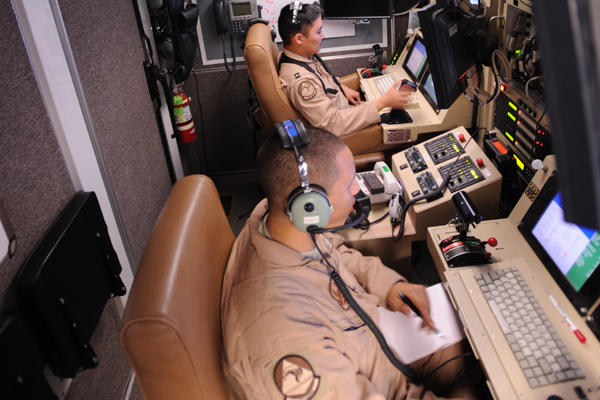The U.S. Air Force will offer a new $15,000 annual bonus beginning in fiscal 2016 to entice more drone pilots to stay in the service.
The service on Wednesday announced the critical skills retention bonus for experienced operators of MQ-1 Predator and MQ-9 Reaper drones who agree to a five- or nine-year service extension. Many airmen in the field have been leaving due to stress and burnout, creating a shortage that has forced commanders to scale back missions.
With total values ranging from $75,000 to $135,000 -- half of which could be paid up front -- the so-called re-up bonus will be offered to drone pilots in the 18X specialty code with at least six years of experience. It will take effect Oct. 1 and supersede a previous temporary increase in monthly incentive pay.
"In a complex global environment, RPA pilots will always be in demand," Air Force Secretary Deborah Lee James said in a statement. "We now face a situation where if we don't direct additional resources appropriately, it creates unacceptable risk. We are working hard to put solutions in place to bring needed relief to our airmen and ensure our actions show their value to our mission."
Related Stories
The bonus comes several months after the Air Force increased incentive pay for senior RPA operators from $650 a month to $1,500 a month. The move was designed to be a short-term fix while service officials sought approval for the new longer-term bonus.
It wasn't immediately clear how many airmen would be eligible for the re-up bonus. Fewer than 10 airmen were initially eligible for the higher incentive pay. The low figure was cited by at least one drone pilot as evidence that service leaders weren't taking the issue seriously.
Band-Aids
"They're not trying to fix the problem -- it's more Band-Aids," the individual said. "They're trying to spend the least amount of money to get the best benefit. If they really want to fix the problem, all they have to do is take more people out of planes that are over-manned," such as the C-17 cargo aircraft, KC-10 refueling tanker and F-16 fighter jet, he said.
Overall, the Air Force has about 1,000 active-duty pilots for Predators and Reapers, though at least 200 more are needed to fulfill today's missions. The service trains about 180 such pilots a year, but loses about 240 due to attrition. Training units are chronically understaffed because many trainers are pulled from operational units.
The workforce has been stressed for years as commanders in Afghanistan and other combat zones demanded more intelligence, surveillance and reconnaissance from unmanned systems. Drone pilots typically fly between 900 and 1,100 hours a year, while fighter pilots generally fly about a quarter as much. Exacerbating the problem is a cultural divide within the service related to the ongoing stigmatization of unmanned aircraft operators, who are still judged by some of their peers as not being "real" pilots.
Indeed, enough RPA operators have left that Air Force officials cut the number of combat air patrols by armed surveillance drones to 60 a day by October, down from a peak of 65 a day. Officials had planned to cut the number of 24-hour patrols to 55, but that changed after the U.S. launched airstrikes last year against Islamic militants in Iraq and Syria.
The Air Force will also assign about 80 undergraduate pilot training graduates over the next year to serve a tour in an RPA unit before being placed into a manned aircraft unit. The mandatory placements, last ordered in 2011, are "the fastest way to address that shortfall without sacrificing mission capability in other platforms," Air Force Chief of Staff Gen. Mark Welsh said in the statement.
The Air Force has turned to the Air National Guard and Air Force Reserve, as well as contractors, to find pilots to fill shortages in the RPA workforce.
The service has also asked lawmakers to approve its request to shift $100 million in existing funding for critical unmanned programs, including six new ground control stations, more training simulators and associated facilities, improved software, and faster development of automatic takeoff and landing technology, according to the statement.
General Atomics Training Academy
The private sector is also responding to the workforce shortage. General Atomics, the San Diego-based maker of the Predator-series of unmanned aircraft, last month announced plans to open a training academy in the U.S. in early 2016 for drone pilots from the U.S. and allied countries.
"International fleets are growing. Demand for pilots is growing," said Christopher Ames, director of international strategic development at General Atomics Aeronautical Systems Inc. "As more and more countries buy this, operate it, you need to train crews."
-- Brendan McGarry can be reached at brendan.mcgarry@military.com




























